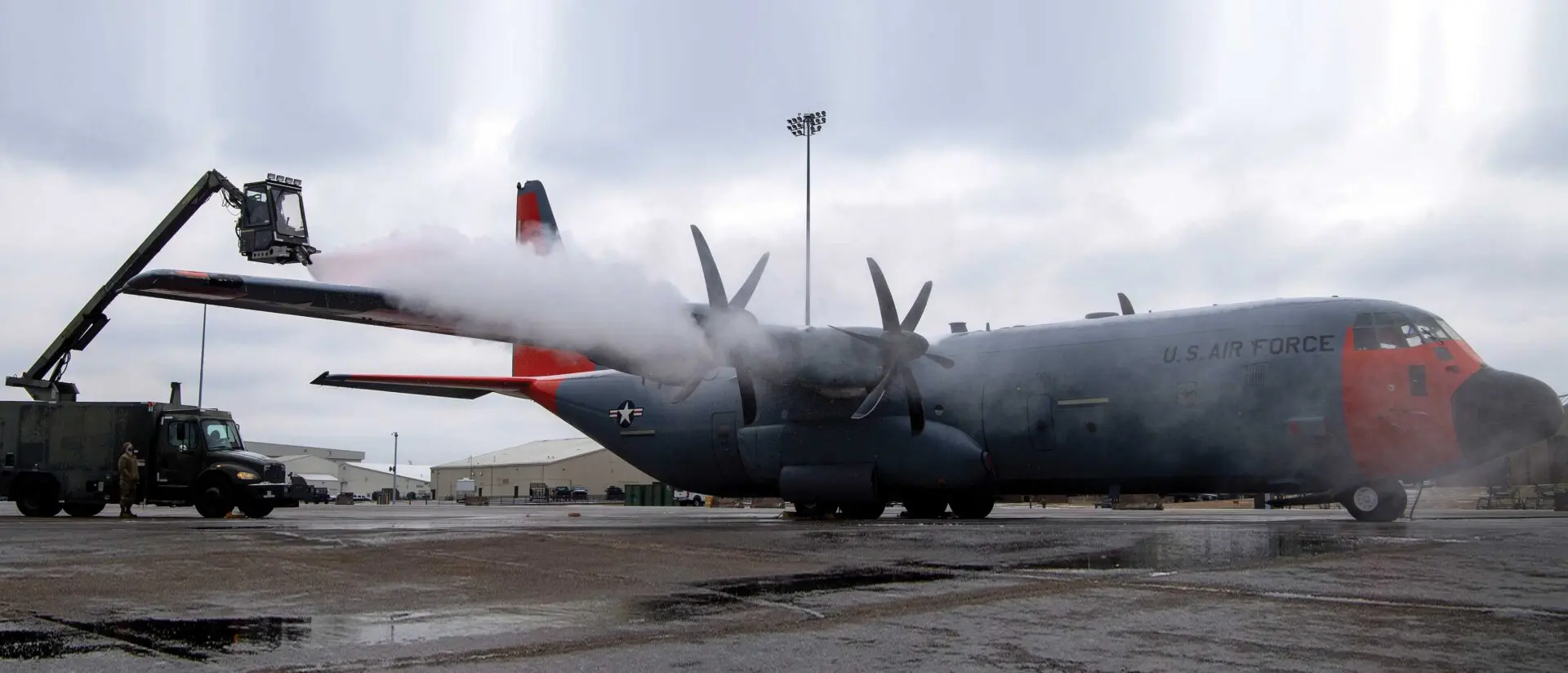Airplane Icing Is No Laughing Matter
By MS. BETTY NYLUND BARR, STAFF WRITER
When I hear the word icing, I think of cake; to pilots, however, icing is something they definitely want to avoid when flying. When ice forms on aircraft, it introduces a whole new level of risk.
The two basic forms of aircraft icing are structural icing, which occurs on the exterior of the plane, and induction icing, which—as the term implies— affects the induction system.
Structural icing occurs when an aircraft in flight comes in contact with supercooled water droplets—droplets that are still liquid although they are below freezing temperature. The National Weather Service lists the following factors that influence the occurrence and severity of icing:1
- Particle size—Large drops strike the wing and spread farther, whereas small drops go with the airflow along the wing.
- Particle concentration—The heavier the concentration of water droplets, the more droplets the aircraft will strike.
- Shape of aircraft surfaces—Thin wings catch more water droplets than thick wings.
- Aircraft speed—As an aircraft’s speed increases, the number of water droplets it hits in a given time increases.
- Environmental temperature— Generally, the static air temperature is between +2°C and -20°C.2
- Aircraft surface temperature—The temperature at the point where the aircraft collides with the water must be 0°C or colder.3
Three forms of structural icing can occur. Clear, or glaze, ice is potentially the most hazardous form of icing. It occurs when the temperature is close to freezing. The relatively warmer temperature causes the supercooled droplets to flow aft before freezing, creating a solid sheet of clear ice with no air bubbles, making removal difficult. As the droplets mingle and freeze together, they often form single or double “horns†that project ahead of the wing or other surface on which the ice is accumulating; that irregular buildup significantly affects the airflow over the wing.4
Rime ice is milky white and occurs at colder temperatures when water freezes on impact with the aircraft, forming wedge-shaped accretions.5 The rapid freezing causes air bubbles to form in the ice, causing it to look opaque and to be porous and brittle. Because of its brittleness, rime ice can be easily removed with de-icing equipment.
Mixed ice forms when the supercooled water droplets vary in size or mix with snow or ice particles. The ice particles freeze into the clear ice and create a very rough, whitish surface buildup—sometimes shaped like a mushroom—on the leading edges of the aircraft.6 The accumulation builds quickly and is difficult to remove.
The effects of structural icing are cumulative, and they include an increase in weight and drag and a decrease in lift and thrust, so the aircraft slows and is forced downward.
Induction icing forms in the air intake of an aircraft engine and can reduce the amount of air available for combustion.7 It occurs in both piston and jet engines. The most frequently seen induction icing in reciprocating engines is carburetor ice. Although fuel-injection engines are less apt to experience induction icing, it can happen if ice forms over the engine’s air source. Turbojet aircraft draw air into the engines, reducing the pressure and, thereby, the temperature, and icing is possible.
Ice can also damage aircraft if a piece breaks off and is drawn into the running engine; it can damage the fan blades, stall the engine compressor, or cause combustor flameout. Another problem can occur if excessive runback water from anti-icing systems refreezes on untreated surfaces of the inlet, which can reduce airflow to the engine or distort it in a manner that causes compressor or fan blades to vibrate and potentially damage the engine. Icing problems can also occur in turbine engines when the engine probes used to set power levels become iced, resulting in erroneous readings, faulty operation, or total loss of power.8
The National Weather Service classifies four levels of icing intensity and their potential effects:9
- Trace—Icing is perceptible but shows no significant accumulation. The effects of this intensity are usually not hazardous even if de-icing or anti-icing treatment is not used.
- Light—Significant icing accumulation occurs during a prolonged flight (more than 1 hour). Occasional use of de-icing or anti-icing treatment can prevent or remove the accumulation.
- Moderate—Significant icing accumulation occurs during a short flight. The accumulation rate is such that even short flights become potentially hazardous, and de-icing or anti-icing treatment or flight diversion is necessary.
- Severe—Icing produces rapid, dangerous accumulations on aircraft. De-icing or anti-icing equipment fails to reduce or control the hazard, and immediate flight diversion is necessary.
AMC’s ground crews take every precaution to make sure that aircraft have been de-iced before takeoff. During the flight, remain vigilant of the observable weather conditions and the condition of the aircraft, and monitor weather report transmissions. If conditions warrant, divert or land the aircraft—and live to fly another day.
1 National Weather Service. Icing. https://www.weather.gov/source/zhu/ZHU_Training_Page/icing_stuff/icing/icing.htm.
2 NASA. “Basic Icing Physics.†In A Pilot’s Guide to Inflight Icing: Module I—Before You Fly. https://aircrafticing.grc.nasa. gov/1_1_2_2.html.
3 Federal Aviation Administration. “Icing.†Chapter 10 in Aviation Weather For Pilots and Flight Operations Personnel. AC 00-6A. https://www.faa.gov/documentLibrary/media/Advisory_Circular/AC%2000-6A%20Chap%2010-12.pdf.
4 National Weather Service. Icing.
5 NASA. “Basic Icing Physics.â€
6 Federal Aviation Administration. “Icing.â€
7 Flightstudy.com. Aircraft Icing and Types of Icing. https://www.flight-study.com/2021/07/aircraft-icing-andtypes-of-icing.html.
8 Flightstudy.com. Aircraft Icing and Types of Icing.
9 National Weather Service. Icing.

